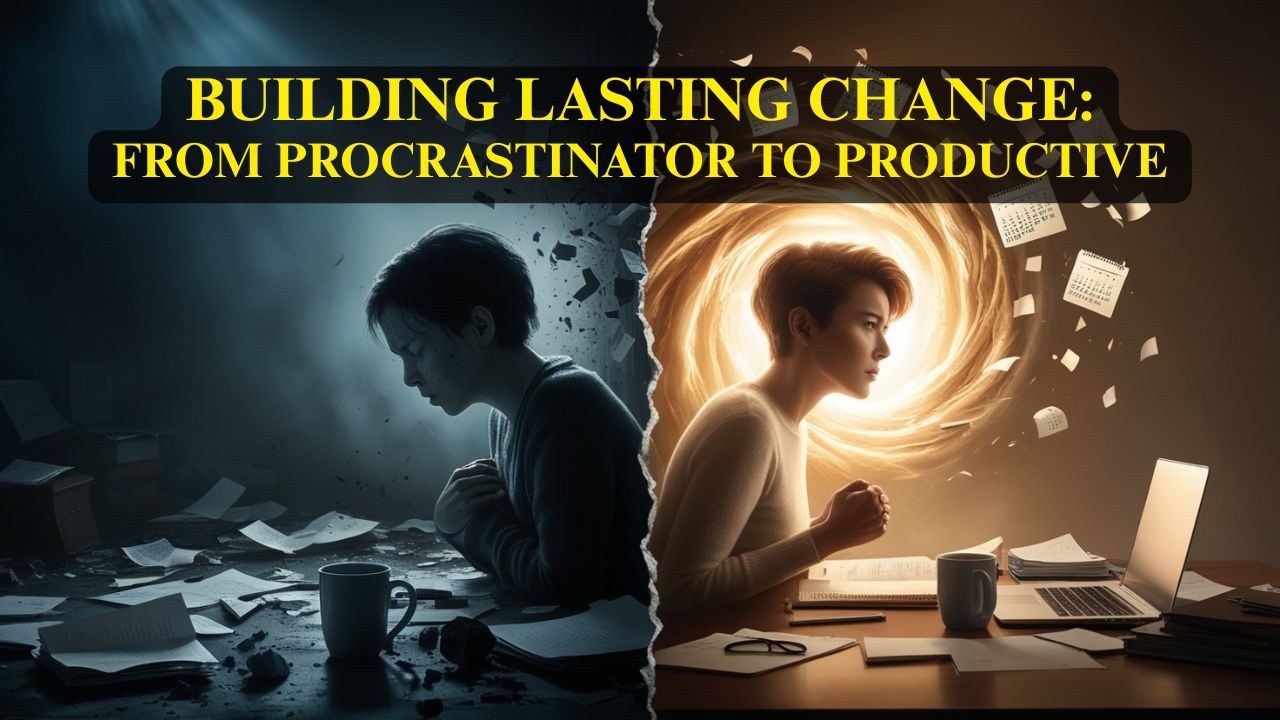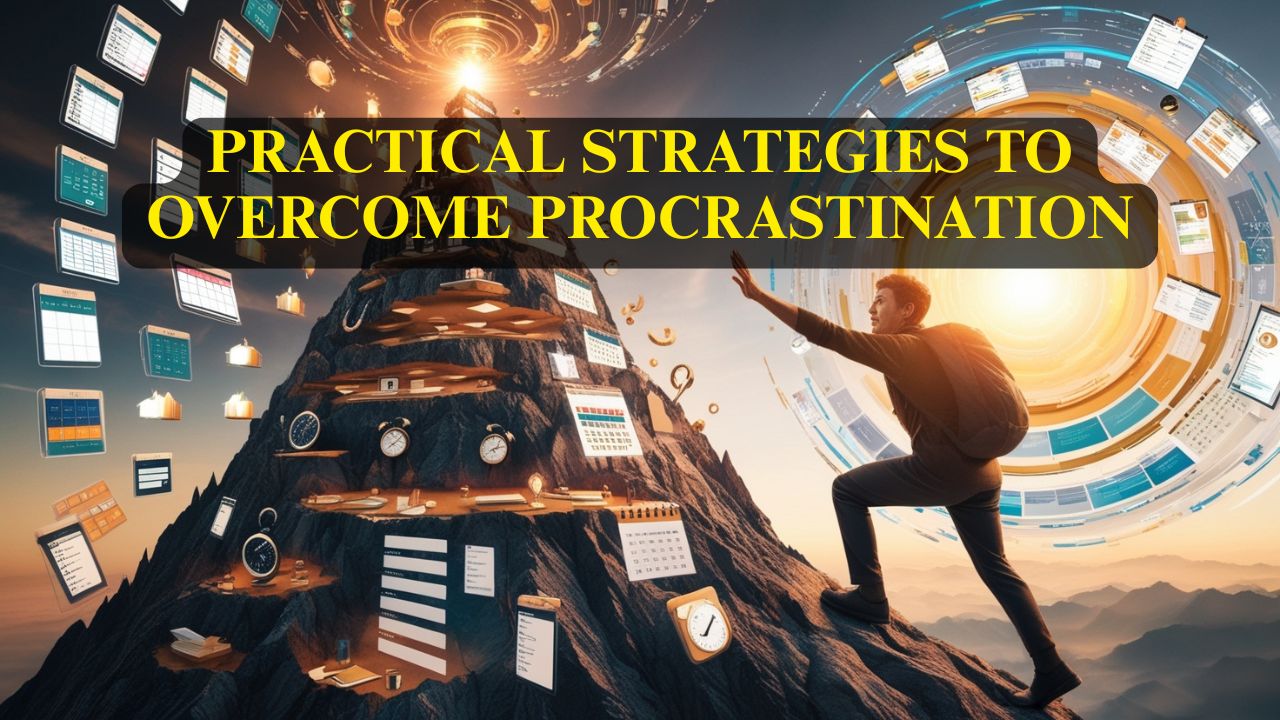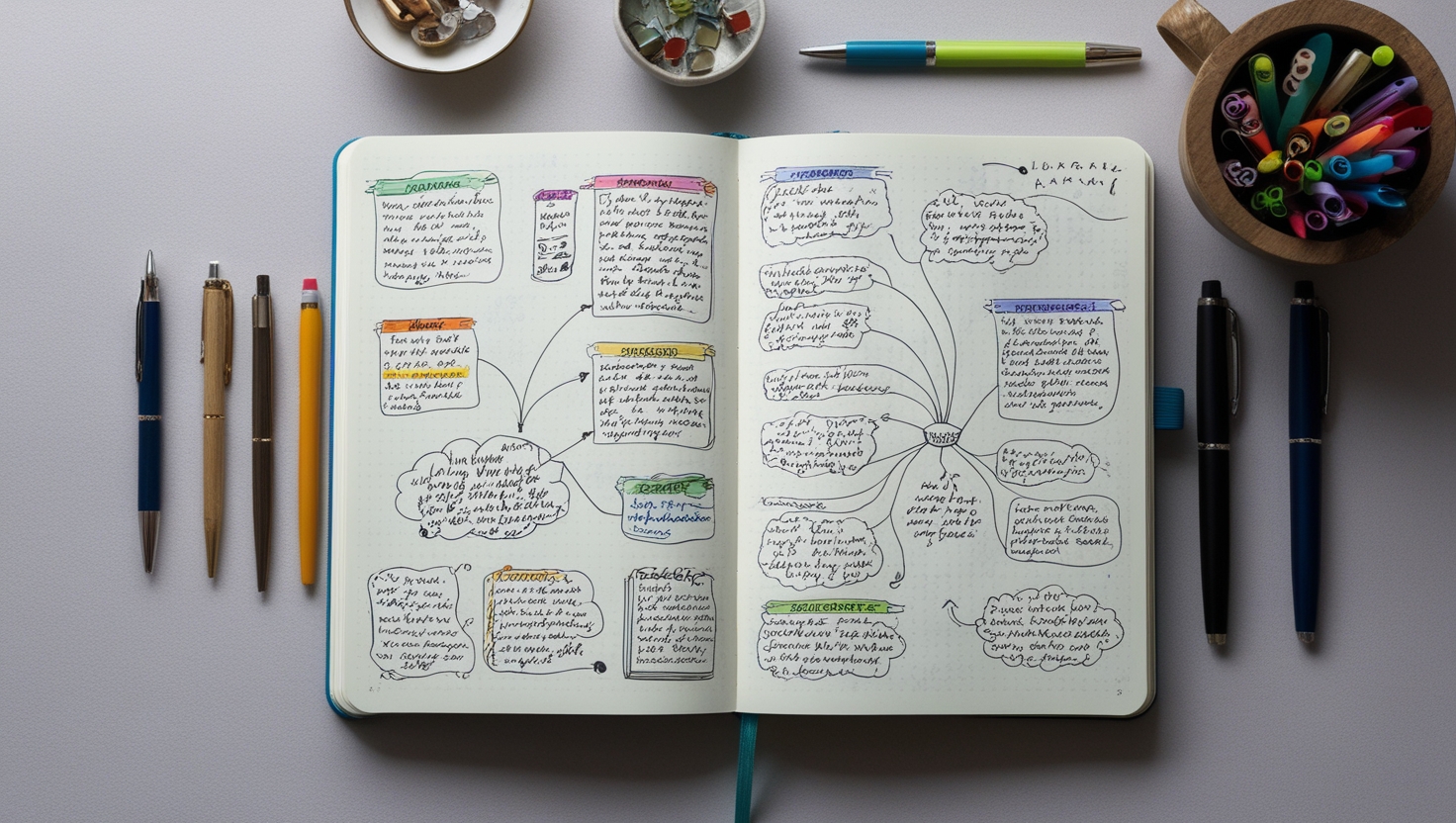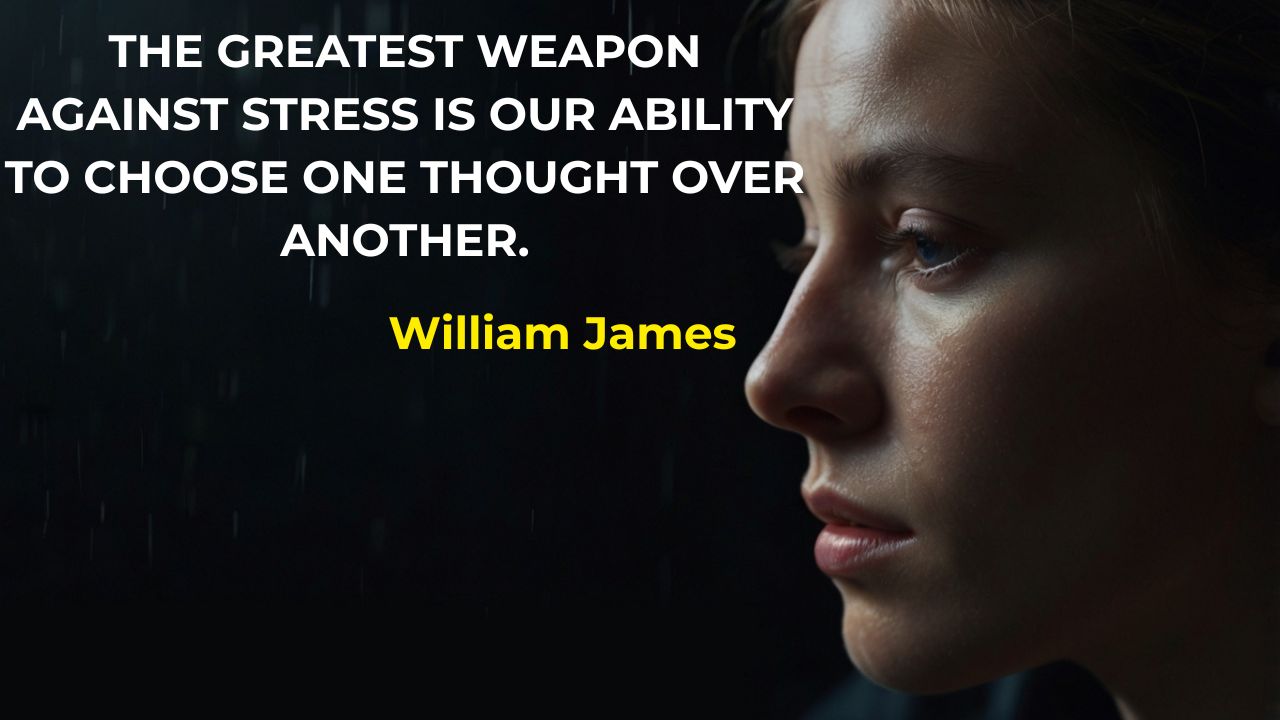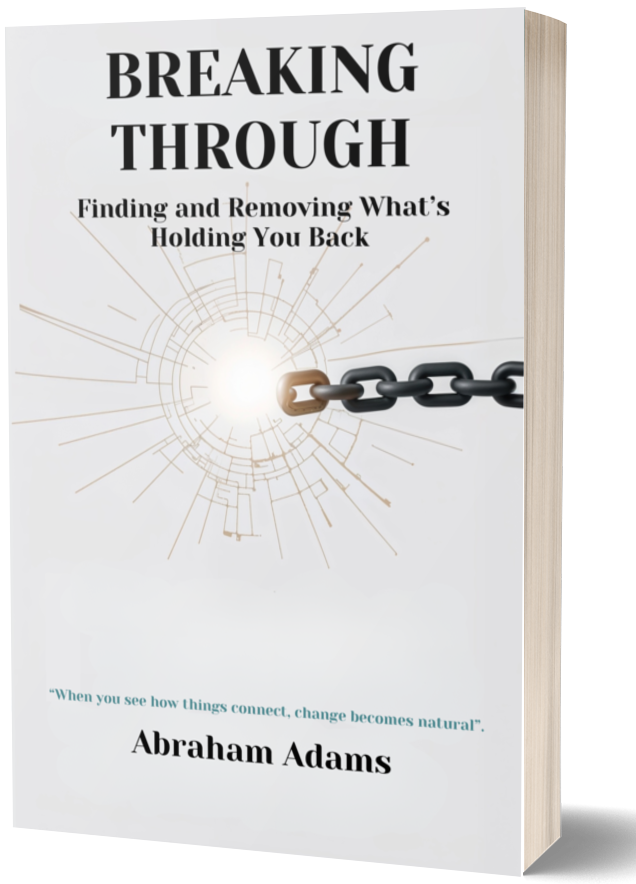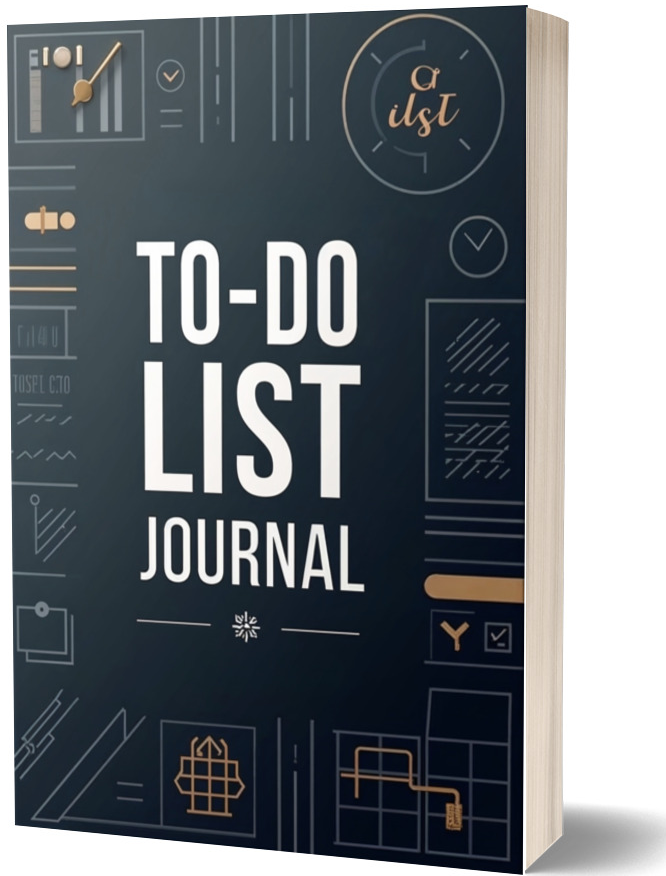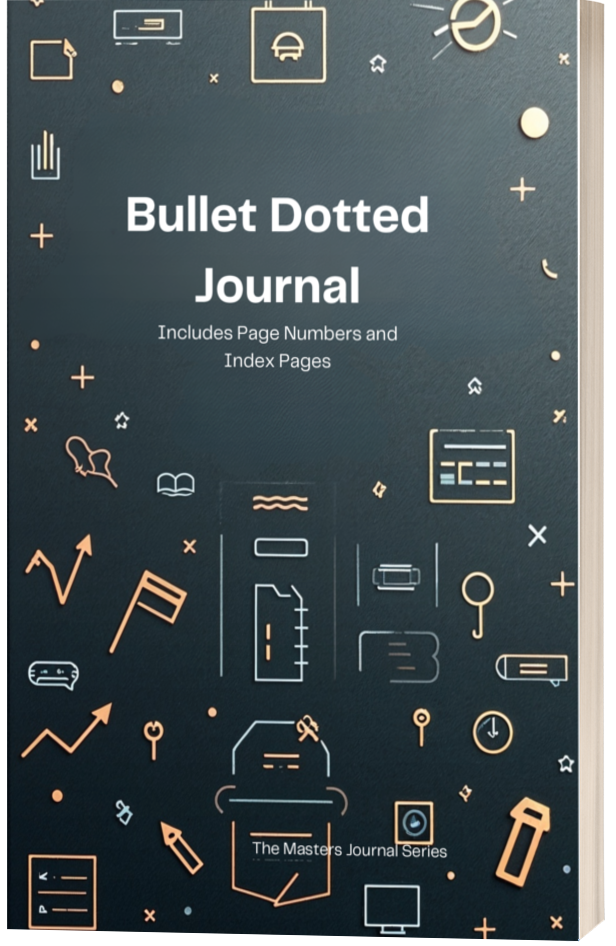Super User
THE ULTIMATE SYSTEM - DESIGNING A LIFE WHERE GOOD HABITS ARE INEVITABLE
Article 5: The Ultimate System - Designing a Life Where Good Habits Are Inevitable
You've learned to recognize habits, understand their formation timeline, stack them strategically, and recover from setbacks. Now it's time for the ultimate level: creating an integrated system where positive behaviors become so natural, so inevitable, that willpower becomes almost irrelevant. This is how you move from someone who has good habits to someone who is shaped by them.
From Habits to Identity
The highest level of habit mastery isn't about doing different things—it's about becoming a different person. Every action you take is a vote for the type of person you want to become. Repeat enough votes, and you win the election of your identity.
When you exercise regularly, you start to see yourself as "someone who works out." When you read daily, you become "a reader." When you eat nutritious food consistently, you identify as "someone who takes care of their body." This identity shift is powerful because it changes your decision-making at a fundamental level.
A person who identifies as healthy doesn't need willpower to choose salad over pizza—choosing salad aligns with who they are. Someone who sees themselves as disciplined doesn't struggle to wake up early—early rising is simply what disciplined people do.
Identity-Based Habits: Instead of focusing on what you want to achieve, focus on who you want to become. Then ask: "What would this type of person do in this situation?"
The Four Layers of Behavior Change
Most people try to change their habits at the surface level—focusing on outcomes (what they want to achieve) or processes (what they want to do). But lasting change happens when you work from the inside out:
Layer 1: Identity (Who you are) - This is the core. Your beliefs, worldview, and self-image.
Layer 2: Process (What you do) - Your habits, systems, and methods.
Layer 3: Outcomes (What you get) - Your results, achievements, and external measures.
Most habit change fails because it starts with outcomes and works inward. "I want to lose 20 pounds, so I'll exercise daily." But identity-based habit change starts with identity and works outward: "I want to become someone who prioritizes health, so I'll make choices that healthy people make."
Environmental Design: Making Good Choices Inevitable
Your environment is the invisible hand that shapes your behavior. Every day, you make dozens of choices that feel like personal decisions but are actually responses to environmental cues. Master your environment, and you master your habits.
The Principle of Least Effort: People gravitate toward the option that requires the least energy. If you want to eat more fruit, put it where you'll see it first when you open the refrigerator. If you want to read more, place books throughout your living space. If you want to exercise, lay out your workout clothes the night before.
Friction Design: Add friction to bad habits and remove friction from good ones. Make it harder to check social media by logging out of accounts and removing apps from your home screen. Make it easier to drink water by placing bottles everywhere you spend time.
Environmental Audit: Walk through your living space and identify every cue that triggers an unwanted behavior. Then identify every barrier that makes desired behaviors more difficult. Make a list of specific changes you can implement this week.
The Power of Social Systems
We are social creatures, and our habits are deeply influenced by the people around us. The most powerful habit systems leverage social dynamics to create accountability and support.
The Three Social Levels:
Level 1: The Close - Your family, closest friends, and people you see daily. Their habits become your habits through constant exposure and social pressure.
Level 2: The Many - Your broader social circle, coworkers, and community. They establish what's "normal" in your environment.
Level 3: The Powerful - People you admire, mentors, and role models. They show you what's possible and inspire you to raise your standards.
Strategic habit formation involves intentionally curating each level. Join groups where your desired behavior is normal. Find accountability partners who share your goals. Seek mentors who embody the identity you want to develop.
Social Strategy: You don't just adopt habits—you adopt the social groups where those habits are normal. Want to become a runner? Join a running club. Want to read more? Join a book club. The social pressure will pull you toward the behavior even when motivation fails.
Building Automatic Systems
The ultimate habit system runs on autopilot. It's designed so well that good choices happen naturally, without conscious effort or decision-making fatigue.
Decision Elimination: The fewer decisions you have to make about your habits, the more likely you are to maintain them. Barack Obama famously wore the same color suit every day to eliminate decision fatigue for more important choices. You can apply this principle to your habits.
Set specific times for specific activities. Always work out at 6 AM. Always read at 9 PM. Always eat lunch at the same healthy restaurant. When the decision is pre-made, execution becomes automatic.
System Redundancy: Build multiple pathways to the same outcome. If your goal is daily movement, don't just rely on going to the gym. Have backup options: bodyweight exercises at home, walking meetings, taking stairs instead of elevators. This way, changing circumstances don't derail your entire system.
The Habit Stack Ecosystem
At the mastery level, you don't just stack individual habits—you create ecosystems of interconnected behaviors that reinforce each other throughout your day.
A master-level morning routine might look like this:
"When I wake up, I immediately make my bed (commitment to the day). After I make my bed, I drink a large glass of water (hydration). After I drink water, I do 5 minutes of stretching (mobility). After I stretch, I write three priorities for the day (focus). After I write my priorities, I eat a healthy breakfast (nutrition). After breakfast, I review my schedule (preparation)."
Each behavior flows naturally into the next, creating momentum that carries through the entire morning. Missing one step feels uncomfortable because it breaks the flow, making the system self-reinforcing.
Design Your Ecosystem: Map out your ideal day from wake to sleep. Identify natural transition points where you can stack complementary habits. Focus on creating 2-3 strong chains rather than trying to optimize every moment.
The Advanced Tracking System
Master-level habit tracking goes beyond simple completion checkmarks. You track leading indicators, environmental factors, and system performance, not just individual behaviors.
Leading Indicators: Track the behaviors that predict success with your main habits. If your goal is reading daily, track how often you charge your e-reader, how many books you have ready, and how often you eliminate distractions in your reading space.
Environmental Tracking: Monitor which environments support your habits and which sabotage them. Where do you exercise most consistently? What time of day are you most likely to eat well? When do you feel most creative?
System Health: Track how well your overall system is functioning. Are your habit stacks flowing smoothly? How quickly do you recover from disruptions? Are your social environments supporting or hindering your goals?
The Compound Effect at Scale
When you master habits at the system level, you experience compound effects that go far beyond individual behaviors. Your entire life begins to improve simultaneously because all your positive habits reinforce each other.
Exercise improves your energy, which improves your focus, which improves your work performance, which reduces stress, which improves your sleep, which improves your recovery, which improves your exercise performance. Reading increases your knowledge, which improves your decision-making, which improves your relationships, which improves your happiness, which motivates you to read more.
This is why people who master one area of their life often seem to effortlessly improve in others. They're not superhuman—they've learned to create positive feedback loops between their habits.
The Integration Principle: At the highest level, your habits don't compete for time and energy—they create time and energy. A well-designed system makes you more capable, not more busy.
Continuous Evolution
A master-level habit system isn't static—it evolves as you grow and your circumstances change. You regularly audit what's working, what isn't, and what needs adjustment.
Quarterly, ask yourself: Which habits are serving my current goals? Which have become outdated? What new challenges require new habits? How can I simplify my system while maintaining its effectiveness?
This isn't about perfection—it's about conscious evolution. You become someone who doesn't just maintain habits, but who consciously designs and redesigns their life for continuous improvement.
The Ultimate Freedom
Here's the paradox of habit mastery: the more automatic your positive behaviors become, the more freedom you experience. When good choices happen without conscious effort, you free up mental energy for creativity, relationships, and pursuing meaningful goals.
You stop spending mental energy on basic life maintenance and start using it for growth and contribution. You move from managing your life to designing it, from reacting to circumstances to creating them.
Your Mastery Plan: Over the next 30 days, implement one element from each section of this article. Choose one identity you want to develop, design one environmental change, build one social connection around your habits, create one automatic system, and set up one advanced tracking method. Focus on integration rather than perfection.
From Autopilot to Conscious Design
You began this journey learning that nearly half your life runs on autopilot through habits. You've now learned to take conscious control of that autopilot system, designing it to serve your highest aspirations rather than your lowest impulses.
This is the true mastery of habits: not just building individual behaviors, but becoming the architect of your own character. You understand that you are not at the mercy of your circumstances or your past programming. You have the knowledge and tools to systematically become the person you want to be.
The journey from unconscious habits to conscious systems is not easy, but it is transformative. Every day, with every choice, you are writing the story of who you become. Make it a story worth reading.
Your life is not determined by your genetics, your upbringing, or your circumstances. It is determined by your systems. And now you know how to build systems that make the person you want to become inevitable.
The autopilot is still running. But now, you're the one programming it.
WHEN HABITS BREAK - THE RECOVERY STRATEGIES THAT SEPARATE SUCCESS FROM FAILURE
Article 4: When Habits Break - The Recovery Strategies That Separate Success from Failure
Here's what nobody tells you about building habits: you will fail. You'll miss days. You'll fall off track. You'll have weeks where everything falls apart. This isn't a character flaw or lack of willpower—it's part of the process. The difference between people who succeed long-term and those who give up isn't that they never fail. It's how they handle failure when it inevitably comes.
The Perfectionist's Trap
Most people approach habits with an all-or-nothing mindset. They create elaborate routines, stick to them for a few weeks, then hit their first major obstacle. Maybe they get sick, travel for work, or face a family crisis. Their perfect streak breaks, and their inner perfectionist declares the entire effort a failure.
This black-and-white thinking is toxic to habit formation. It treats a temporary setback as a permanent character judgment. "I missed three days of exercise, so I'm not the kind of person who works out." "I ate junk food yesterday, so I've ruined my healthy eating plan."
But here's the truth: your habits aren't defined by your perfect days. They're defined by how quickly you get back on track after your imperfect ones.
The Recovery Rule: Never miss twice. Missing once is a mistake. Missing twice is the beginning of a new habit—the habit of not doing the thing you're trying to build.
Understanding the Types of Failure
Not all failures are created equal. Understanding the difference helps you respond appropriately:
The Slip: A one-time miss due to unusual circumstances. You were sick, traveling, or dealing with an emergency. These are normal and don't significantly impact habit formation.
The Slide: Missing 2-3 days in a row, often due to changing circumstances or losing motivation. This is where intervention is crucial.
The Spiral: Missing a week or more, usually accompanied by negative self-talk and the feeling that you've "ruined everything." This requires a complete reset strategy.
Each type requires a different recovery approach. Treating a slip like a spiral creates unnecessary stress, while treating a spiral like a slip ignores the need for strategic intervention.
The Bounce-Back Protocol
When you miss your habit, follow this exact sequence:
Step 1: Acknowledge Without Judgment. Notice that you missed without adding emotional drama. "I didn't meditate yesterday" is a fact. "I'm terrible at sticking to commitments" is unnecessary judgment that makes recovery harder.
Step 2: Identify the Cause. Was it a scheduling conflict, lack of energy, changed environment, or something else? Understanding why helps prevent future occurrences.
Step 3: Plan Your Return. Decide exactly when and how you'll get back on track. Be specific: "I'll do my workout tomorrow at 7 AM in my living room."
Step 4: Execute Immediately. Don't wait for motivation or the "perfect" moment. Take the smallest possible action toward your habit as soon as possible.
Create Your Recovery Plan: Before you need it, write down your bounce-back protocol for the habit you're building. What's the smallest action you can take to get back on track? Where will you do it? When will you do it? Having this planned in advance removes decision-making from an already difficult moment.
The Power of Minimum Viable Habits
One of the best recovery strategies is to have a "minimum viable" version of every habit. This is the smallest possible action that still counts as doing the habit.
If your habit is "exercise for 30 minutes," your minimum viable version might be "do 5 push-ups." If your habit is "read for 20 minutes," your minimum viable version might be "read one paragraph."
On days when doing your full habit feels impossible—you're exhausted, overwhelmed, or dealing with unexpected challenges—do the minimum viable version. This maintains the neural pathway and prevents the habit from completely breaking.
Environmental Recovery
Often, habits break because our environment changes. You had a perfect morning routine at home, but then you traveled for work. You were eating healthy when you controlled your kitchen, but then you moved in with a roommate who keeps junk food around.
Recovery requires adapting your habits to new environments rather than waiting for the "perfect" conditions to return:
Travel Strategy: Identify which habits you can maintain regardless of location and which need travel-specific versions. Maybe you can't do your full workout, but you can do bodyweight exercises in any hotel room.
Social Strategy: Plan how to maintain habits when around people who don't share them. This might mean eating before social events, finding workout partners, or simply being prepared to explain your choices without being defensive.
Stress Strategy: High-stress periods are when habits often break, but they're also when you need positive routines most. Identify which habits help you manage stress and prioritize maintaining those above others.
Flexibility Principle: Rigid habits break under pressure. Flexible habits bend and adapt. Build flexibility into your habits from the beginning by having multiple ways to fulfill them.
The Compound Recovery Effect
Here's something counterintuitive: getting better at recovering from broken habits makes you better at building habits in the first place. When you know you can bounce back from setbacks, you're more willing to start ambitious habits and less likely to give up at the first sign of difficulty.
This creates a positive cycle: you attempt more challenging habits because you trust your recovery skills, which gives you more practice with recovery, which makes you more confident about attempting even better habits.
Redefining Success
Instead of measuring success by perfect streaks, measure it by recovery speed. How quickly do you get back on track after missing? How do you treat yourself during the recovery process? Are you getting better at bouncing back?
A person who exercises 5 days a week for a year, with several breaks and recoveries, is infinitely more successful than someone who exercises every day for a month then quits entirely after their first missed day.
Track Your Recovery: Along with tracking your habit completion, track your recovery time. When you miss, how many days does it take to get back on track? Celebrate improvements in this metric as much as you celebrate consistency.
The Long-Term Perspective
Building lasting habits isn't about perfection—it's about persistence. The people who successfully transform their lives through habits aren't the ones who never fail. They're the ones who fail frequently, recover quickly, and keep going anyway.
This resilience becomes a meta-skill that extends beyond individual habits. You become someone who can start over, adapt to changing circumstances, and maintain progress despite setbacks. These qualities serve you not just in habit formation, but in every area of life where consistency matters.
In our final article, we'll explore the ultimate level of habit mastery: designing complete systems that make positive behaviors inevitable and negative behaviors nearly impossible. You'll learn how to create an environment and lifestyle where good choices become the default, effortless option.
The Stacking Strategy - How to Build New Habits by Hijacking Old Ones
Article 3: The Stacking Strategy - How to Build New Habits by Hijacking Old Ones
What if I told you that the habits you already have—even the ones you consider "bad"—could become the secret weapons for building the habits you want? This is the power of habit stacking, a technique that turns your existing automatic behaviors into launching pads for new ones.
The Problem with Starting from Scratch
Most people try to build new habits in a vacuum. They decide they want to meditate, so they vaguely commit to "meditate every day." They want to exercise, so they tell themselves they'll "work out regularly." They want to eat better, so they resolve to "be healthier."
This approach fails because it requires you to remember to do something new at some point during your day. Your brain, which is already managing thousands of automatic behaviors, struggles to fit in this new, unfamiliar action.
Habit stacking solves this problem by anchoring new behaviors to existing ones. Instead of trying to create a new neural pathway from nothing, you're adding a car to an already-moving train.
The Habit Stacking Formula: After/Before [EXISTING HABIT], I will [NEW HABIT].
Why Your Brain Loves This Approach
Your existing habits have already carved deep neural pathways in your brain. These pathways are like well-traveled highways with strong traffic flow. When you stack a new habit onto an existing one, you're essentially adding an exit ramp to that highway.
This is far easier than building an entirely new road through uncharted territory. Your brain already has the cue (the existing habit) and the established pattern (the time and context). You're just extending the routine.
The Art of Choosing the Right Anchor
Not all existing habits make good anchors for new ones. The best anchor habits are:
Highly consistent: They happen every day, preferably at the same time.
Specific: They have a clear beginning and end, not vague or variable.
Already automatic: You don't have to think about doing them.
Good anchor habits include: making coffee, brushing teeth, sitting down at your desk, getting in your car, finishing lunch, or turning off your bedroom light.
Poor anchor habits include: "after I wake up" (too vague), "when I have time" (inconsistent), or "after I exercise" (if exercise isn't already automatic).
Find Your Anchors: List 10 things you do every single day without thinking. These are your potential anchor habits. The more specific and consistent, the better.
Stacking in Action: Real Examples
Let's look at how habit stacking works in practice:
For Building a Reading Habit: "After I pour my morning coffee, I will read one page of a book."
For Exercise: "After I put on my work shoes, I will do 10 push-ups."
For Gratitude Practice: "Before I check my phone in the morning, I will think of one thing I'm grateful for."
For Better Nutrition: "After I sit down for lunch, I will eat my vegetables first."
Notice how each new habit is small and immediately follows (or precedes) a specific, existing behavior. There's no ambiguity about when to do it.
The Two-Minute Rule
When you're stacking habits, start ridiculously small. The new behavior should take less than two minutes to complete. This isn't your final goal—it's your starting point.
"Read for 30 minutes" becomes "read one page." "Exercise for an hour" becomes "do one push-up." "Meditate for 20 minutes" becomes "take three deep breaths."
This might seem too easy to matter, but that's exactly the point. You're not trying to achieve your ultimate goal immediately. You're trying to establish the behavior pattern. Once the habit becomes automatic, you can gradually expand it.
Remember: A habit must be established before it can be improved. You can't optimize something that doesn't exist yet.
Advanced Stacking: Building Chains
Once you've mastered basic habit stacking, you can create chains of behaviors that flow naturally from one to the next:
"After I pour my coffee, I will read one page. After I read one page, I will write down one insight. After I write down one insight, I will plan my most important task for the day."
This creates a morning routine where each behavior naturally triggers the next, building momentum and creating a powerful start to your day.
Troubleshooting Common Stacking Problems
The Stack Breaks: If you consistently skip the new habit, your anchor might not be consistent enough, or the new behavior might be too large. Choose a more reliable anchor or make the new habit smaller.
The Timing Feels Wrong: Some combinations don't flow naturally. "After I brush my teeth, I will go for a run" might not work if you brush your teeth right before bed. Match the energy level of the new habit to the timing of the anchor.
Forgetting to Stack: Write your habit stack on a note and place it where you'll see it during your anchor habit. Visual reminders help during the formation period.
Create Your First Stack: Choose one anchor habit and one tiny new behavior. Write it in the format: "After I [ANCHOR HABIT], I will [NEW HABIT]." Practice this exact sequence for the next seven days, focusing only on consistency, not perfection.
The Compound Power of Small Stacks
The beauty of habit stacking isn't just that it makes new habits easier to remember—it's that it creates compound growth. Each successfully stacked habit becomes an anchor for the next one.
Over time, you build interconnected systems of positive behaviors that reinforce each other. Your morning coffee doesn't just wake you up; it triggers reading, which triggers reflection, which triggers planning, which triggers focused work.
People who seem to effortlessly maintain multiple good habits aren't superhuman. They've learned to stack behaviors strategically, using their existing automatic patterns as the foundation for continuous improvement.
From Stacking to Systems
As you get comfortable with habit stacking, you'll start to see your entire day differently. Instead of a random collection of activities, you'll see opportunities to create flows and systems that make positive behaviors inevitable.
This systematic approach to habit formation is what separates people who make lasting changes from those who rely on motivation and willpower. You're not just building individual habits—you're designing a lifestyle.
In our next article, we'll explore how to handle the inevitable obstacles and setbacks that come with habit formation. You'll learn the difference between a temporary lapse and a permanent failure, and discover the recovery strategies that keep successful people on track.
The Science of Sticking - How Long Habits Actually Take to Form and Why most People Get it Wrong
Article 2: The Science of Sticking - How Long Habits Actually Take to Form and Why Most People Get It Wrong
If you've ever tried to build a new habit, you've probably heard that it takes 21 days. This number gets thrown around so often that it feels like scientific fact. But here's the truth: the 21-day rule isn't just wrong—it's dangerously misleading, and it's probably sabotaging your efforts to change.
The Myth That's Keeping You Stuck
The 21-day habit formation idea came from a plastic surgeon named Maxwell Maltz in the 1960s. He noticed that patients took about 21 days to adjust to their new appearance after surgery. Somehow, this observation about psychological adjustment got twisted into a rule about habit formation.
But when researchers at University College London actually studied habit formation, they discovered something very different. They tracked 96 people over 254 days, monitoring how long it took for behaviors to become automatic. The results were eye-opening.
The Real Numbers: On average, it took 66 days for a new behavior to become automatic. But here's the crucial part—the range was enormous, from 18 days for simple habits like drinking a glass of water, up to 254 days for more complex behaviors like daily exercise.
Why This Changes Everything
Understanding the real timeline of habit formation changes how you approach personal change. When you expect a habit to stick in 21 days and it doesn't, you assume you've failed. You give up. You tell yourself you don't have enough willpower or discipline.
But the truth is, you might have been right on track. You just quit too early.
Think about it: if you're trying to establish a daily exercise routine and you quit after three weeks because it still feels difficult, you might have given up when you were only one-third of the way to making it automatic.
The Habit Formation Curve
Habit formation doesn't happen in a straight line. It follows a curve that looks like this:
Days 1-20: Maximum effort required. The behavior feels foreign and requires constant conscious decision-making. This is where most people give up.
Days 21-50: Still requires effort, but occasional glimpses of automaticity appear. Some days feel easier than others.
Days 51-90: The behavior starts feeling more natural. Missing a day feels uncomfortable rather than relieving.
Day 90+: True automaticity. The behavior happens with minimal conscious effort. Not doing it feels wrong.
Reframe Your Expectations: Instead of expecting habits to stick in 21 days, plan for at least 66 days, and be prepared for some habits to take up to 6 months. This isn't failure—it's normal.
The Factors That Speed Up or Slow Down Habit Formation
Not all habits are created equal. Several factors determine how quickly a behavior becomes automatic:
Complexity: Simple behaviors like taking a vitamin become habits faster than complex ones like meditating for 20 minutes.
Frequency: Daily behaviors become automatic faster than weekly ones. Your brain needs repetition to build strong neural pathways.
Consistency: Doing something every day for 30 days is more effective than doing it sporadically for 60 days.
Context: Habits that are tied to existing routines or specific locations form faster than those attempted in varying circumstances.
Motivation: The stronger your emotional connection to the behavior, the faster it becomes automatic.
The Plateau Effect
Here's something the research revealed that nobody talks about: habit formation isn't smooth. There are plateaus where it feels like no progress is happening, followed by sudden jumps in automaticity.
This means you might feel like a habit isn't sticking for weeks, then suddenly realize you've been doing it without thinking. Understanding this prevents you from giving up during the plateau periods.
The Golden Rule: Missing one day won't break a forming habit, but missing two days in a row significantly slows the process. If you miss one day, make getting back on track the next day your absolute priority.
The Compound Effect of Patience
When you understand that real habit formation takes 2-6 months, something interesting happens: you stop looking for immediate results and start building systems for long-term success.
This shift in perspective is liberating. Instead of beating yourself up for not being "disciplined enough" after three weeks, you recognize that you're in the normal process of rewiring your brain.
People who successfully build lasting habits aren't more disciplined—they're more patient with the process and more strategic about setting themselves up for success during the formation period.
Designing Your Environment for Success
Since habit formation takes months, not weeks, your environment becomes crucial. You need to design your surroundings to support the behavior during the entire formation period, not just the first few enthusiastic days.
If you're building a reading habit, don't just put a book on your nightstand for a week. Create a permanent reading space with good lighting, remove distractions, and have backup books ready. You're designing for months of repetition, not days.
The 90-Day Commitment: Choose one habit you want to build and commit to doing it for 90 days, regardless of how you feel about it. Track your progress daily, but don't judge your success until day 90. This gives your brain enough time to make the behavior truly automatic.
Why Understanding This Science Gives You Power
Knowledge of the real timeline of habit formation is like having a accurate map instead of a misleading one. You know where you are in the process, you can plan for the difficult periods, and you won't abandon the journey when you hit inevitable obstacles.
Most importantly, you'll stop blaming yourself for being "weak" when habits don't stick immediately. Instead, you'll recognize that building automatic behaviors is a skill that requires time, patience, and the right strategies.
In our next article, we'll explore the most powerful technique for building new habits: habit stacking. You'll learn how to use your existing automatic behaviors as anchors for new ones, making the formation process faster and more reliable.
The Hidden Force Controlling Your Life - Understanding What Habits Really Are
Article 1: The Hidden Force Controlling Your Life - Understanding What Habits Really Are
Right now, as you're reading this, your brain is running on autopilot for dozens of decisions. You didn't consciously decide how to hold this device, which eye to start reading with, or how to balance your body in your chair. These automatic behaviors are habits, and they're quietly steering your life in ways you might never have imagined.
The Invisible Architecture of Your Day
Think about your morning. You probably wake up and follow the same sequence of actions without much thought. Maybe you check your phone first, then stumble to the bathroom, brush your teeth in the same pattern, and make coffee the same way you did yesterday and the day before that.
This isn't laziness or lack of creativity. This is your brain being incredibly efficient. Scientists estimate that 40 to 45 percent of our daily actions aren't actually decisions at all—they're habits. That means nearly half of what you do every day happens without conscious thought.
Key Insight: Habits aren't just small behaviors. They are the compound interest of self-improvement, building momentum that either lifts you up or drags you down, one automatic action at a time.
What Exactly Is a Habit?
A habit is a routine or behavior that is performed regularly and automatically, often without conscious awareness. But here's what makes habits so powerful: they free up mental energy for other tasks while creating predictable patterns in our lives.
Imagine if you had to consciously think through every single action—how to walk, how to speak, how to tie your shoes. You'd be mentally exhausted before breakfast. Habits solve this problem by creating mental shortcuts that your brain can execute without conscious oversight.
The Habit Loop: Your Brain's Operating System
Every habit follows a simple neurological loop discovered by researchers at MIT. This loop has three parts:
The Cue: This is the trigger that tells your brain to go into automatic mode and which habit to use. It could be a time of day, an emotional state, a location, or even the presence of certain people.
The Routine: This is the behavior itself—the automatic action you take. It can be physical, mental, or emotional.
The Reward: This is the benefit you gain from the behavior. It satisfies a craving and teaches your brain that this particular loop is worth remembering for the future.
Try This: Think of one habit you do every day. Can you identify the cue, routine, and reward? For example: seeing your phone (cue) leads to checking social media (routine) which gives you a hit of social connection or entertainment (reward).
Why Your Brain Loves Habits
Your brain is constantly looking for ways to save effort. When you repeat a behavior enough times, your brain literally changes its structure to make that behavior easier to perform. The neural pathways become stronger and more efficient, like a path through the woods that becomes clearer with each person who walks it.
This is why breaking a bad habit feels so difficult, and why forming a good habit requires initial effort but becomes easier over time. You're literally rewiring your brain.
The Two Faces of Habits
Habits are neutral—they're neither inherently good nor bad. They're simply efficient. The same neurological process that helps you automatically brush your teeth can also automatically reach for a cigarette or check your phone compulsively.
The difference between people who seem to effortlessly maintain healthy lifestyles and those who struggle isn't willpower or motivation. It's that successful people have learned to install positive habits that serve their goals, while others remain at the mercy of habits that work against them.
Remember: You don't eliminate habits—you replace them. The goal isn't to remove the automatic behaviors from your life, but to make sure those automatic behaviors are moving you toward the person you want to become.
Taking Back Control
The first step to mastering habits isn't changing them—it's recognizing them. Most habits operate below the level of conscious awareness, which means you can't change what you don't acknowledge.
Over the next few days, start paying attention to your automatic behaviors. Notice when you pick up your phone, what triggers your snacking, or what leads you to feel stressed or calm. Don't judge these behaviors; just observe them.
This awareness is the foundation of everything we'll explore in the coming articles. Because once you understand that nearly half your life is governed by habits, you realize that changing your habits means changing your life.
Your First Assignment: For the next three days, carry a small notebook or use your phone to track one habit. Every time you notice yourself doing this behavior, write down: What happened right before (the cue)? What did you do (the routine)? How did you feel afterward (the reward)? This simple observation will begin to give you power over your automatic behaviors.
In our next article, we'll dive deeper into the science of habit formation and learn exactly how long it really takes to build a new habit—and why the popular "21 days" rule is dangerously misleading.
Test Article
this is a test article
The quick brown fox jumped over the lazy dog. The quick brown fox jumped over the lazy dog. The quick brown fox jumped over the lazy dog.
Self-sabotage is the act of actively or unconsciously preventing yourself from reaching your goals. It can manifest in different ways: procrastination, negative self-talk, making excuses, or even engaging in behaviors that undermine your success. Ironically, these behaviors are often the result of the fear of failure or the belief that you don’t deserve to succeed.
So, how does persistence come into play when it comes to self-sabotage? Persistence is the opposite of self-sabotage. It’s the determination to keep moving forward, despite setbacks and obstacles. In this article, we will explore how self-sabotage can prevent us from reaching our goals, how persistence can help us break free from these patterns, and practical strategies to overcome self-sabotage.
What is Self-Sabotage?
Self-sabotage is any action or thought pattern that interferes with your ability to achieve your goals. It might not always be obvious—it can manifest in subtle ways, such as putting off important tasks, doubting your abilities, or choosing temporary comfort over long-term progress.
Building Lasting Change: From Procrastinator to Productive
Building Lasting Change: From Procrastinator to Productive
You now have a deep understanding of procrastination and a toolkit of strategies to combat it. But knowledge and techniques alone aren't enough—the real challenge lies in creating lasting change. This final article focuses on how to transform from someone who struggles with procrastination into someone who takes consistent, productive action.
Understanding the Change Process
Lasting change happens in stages, and understanding these stages helps you maintain realistic expectations and stay motivated:
Stage 1: Awareness (You've completed this)
- Understanding what procrastination really is
- Recognizing your personal patterns
- Identifying root causes
Stage 2: Preparation (You're here now)
- Developing strategies and tools
- Creating supportive environments
- Building motivation for change
Stage 3: Action
- Implementing new behaviors
- Practicing new responses to triggers
- Building new neural pathways through repetition
Stage 4: Maintenance
- Making new behaviors automatic
- Handling setbacks without giving up
- Continuing to grow and adapt
Stage 5: Integration
- New behaviors become natural and effortless
- Identity shifts from "procrastinator" to "person who takes action"
- Helping others who struggle with similar issues
The Habit Loop: Your Blueprint for Change
Every habit follows a simple loop: Cue → Routine → Reward. To change procrastination habits, you need to interrupt this loop:
Identify Your Cues
- Environmental triggers (messy desk, distracting location)
- Emotional states (anxiety, boredom, overwhelm)
- Time-based patterns (after lunch, Sunday evenings)
- Social situations (certain people or meetings)
Replace the Routine
Instead of your usual procrastination behavior, insert a productive routine:
- Take three deep breaths and identify one small next step
- Use the two-minute rule
- Apply the Pomodoro Technique
- Practice self-compassion and gentle redirection
Design the Reward
Your brain needs to experience benefit from the new behavior:
- Immediate rewards: checking items off a list, playing favorite music
- Progress rewards: visual progress tracking, sharing accomplishments
- Intrinsic rewards: sense of competence, reduced anxiety, self-respect
The 90-Day Transformation Plan
Research suggests it takes approximately 66 days to form a new habit, but complex behavioral changes like overcoming procrastination often take longer. Here's a structured 90-day approach:
Days 1-30: Foundation Building
- Focus on one primary strategy (choose your strongest from the previous article)
- Track your progress daily
- Practice self-compassion when you slip up
- Create environmental supports
- Goal: Build basic awareness and interrupt automatic patterns
Days 31-60: Expansion and Refinement
- Add 1-2 additional strategies
- Identify and address remaining obstacles
- Refine your approach based on what's working
- Start building accountability systems
- Goal: Develop a reliable system that works for your lifestyle
Days 61-90: Integration and Mastery
- Focus on making behaviors automatic
- Handle more complex or challenging situations
- Help others with similar struggles (teaching reinforces learning)
- Plan for long-term maintenance
- Goal: Transform identity from "procrastinator" to "person who takes action"
Creating Your Personal Action Plan
Step 1: Choose Your Core Strategies
Select 2-3 strategies from the previous article that resonated most strongly. Consider your lifestyle, personality, and primary procrastination triggers.
Step 2: Design Your Environment
- Remove or minimize triggers for procrastination
- Make productive behaviors easier
- Create visual reminders of your goals
- Establish a dedicated workspace
Step 3: Build Your Support System
- Identify people who can provide accountability
- Join communities of others working on similar goals
- Consider working with a coach or therapist if needed
- Create ways to track and celebrate progress
Step 4: Prepare for Obstacles
- Identify your highest-risk situations
- Create specific plans for handling setbacks
- Develop self-compassion practices
- Build in flexibility for life's inevitable disruptions
The Identity Shift
One of the most powerful aspects of lasting change is shifting your identity. Instead of thinking "I am a procrastinator who is trying to change," begin thinking "I am someone who takes action, and I'm still learning."
Language Changes That Support Identity Shifts:
- "I don't procrastinate" instead of "I'm trying not to procrastinate"
- "I take action on important things" instead of "I should stop procrastinating"
- "I'm learning to manage my time well" instead of "I'm bad at time management"
- "I handle difficult tasks systematically" instead of "I avoid hard things"
Handling Setbacks and Relapses
Setbacks are normal and expected. The difference between people who succeed long-term and those who don't isn't the absence of setbacks—it's how they respond to them.
When You Have a Setback:
- Acknowledge it quickly: Don't pretend it didn't happen or minimize it
- Avoid the shame spiral: One setback doesn't erase all progress
- Analyze what happened: What triggered the old behavior?
- Adjust your approach: What can you learn from this experience?
- Take immediate action: Do something small to get back on track
- Recommit: Reaffirm your commitment to change
The Comeback Formula:
Setback + Learning + Adjustment + Immediate Action = Stronger Progress
Building Intrinsic Motivation
External motivators (deadlines, pressure, rewards) can jumpstart change, but intrinsic motivation sustains it. Build intrinsic motivation by:
Connecting to Your Values
- Why does overcoming procrastination matter to you?
- How does productive action align with your deepest values?
- What becomes possible when you're not held back by procrastination?
Focusing on Growth
- Celebrate progress, not just outcomes
- View challenges as opportunities to strengthen your skills
- Embrace the learning process
Cultivating Autonomy
- Choose your own goals and methods
- Maintain flexibility in how you approach tasks
- Take ownership of your change process
Advanced Strategies for Long-Term Success
The Pre-Commitment Strategy
Make future procrastination more difficult by:
- Scheduling important tasks during your peak energy times
- Using apps that block distracting websites
- Creating financial stakes (donate to a cause you dislike if you don't follow through)
- Making public commitments
The Systems Approach
Instead of relying on motivation, create systems that make productive behavior automatic:
- Regular reviews of goals and progress
- Standardized routines for different types of tasks
- Checklists and templates for common activities
- Automated reminders and scheduling
The Continuous Improvement Mindset
- Regularly assess what's working and what isn't
- Experiment with new strategies and approaches
- Seek feedback from others
- Stay curious about your own behavior patterns
Maintaining Progress in Different Life Phases
Your anti-procrastination strategies may need to evolve as your life changes:
During High-Stress Periods
- Simplify your strategies to the most essential ones
- Lower your standards temporarily to maintain momentum
- Focus on stress management and self-care
- Use support systems more actively
During Major Life Transitions
- Expect temporary increases in procrastination
- Rebuild routines gradually
- Adapt strategies to new circumstances
- Be patient with yourself during adjustment periods
During Success and Growth
- Avoid complacency by setting new challenges
- Help others who are earlier in their journey
- Continue learning and refining your approach
- Celebrate your progress and transformation
Creating Your Legacy
As you overcome procrastination, you become a model for others. Consider how you can:
- Share your story and strategies with others
- Mentor someone who struggles with similar issues
- Create systems that help your family or team be more productive
- Continue growing and challenging yourself in new areas
Your Transformation Commitment
Take a moment to write down your commitment to change. Include:
- Why overcoming procrastination matters to you
- The specific strategies you'll start with
- How you'll track your progress
- What support you'll seek
- How you'll handle setbacks
Final Thoughts: From Procrastinator to Producer
You've embarked on a journey that goes far beyond simply getting things done. Overcoming procrastination is about becoming the person you want to be—someone who takes action, follows through on commitments, and creates the life they envision.
Remember that this transformation isn't about perfection. It's about progress, growth, and developing the skills to handle whatever challenges life presents. There will be setbacks, difficult days, and moments of doubt. That's not failure—that's part of the human experience.
What matters is that you now have the knowledge, tools, and framework to continue moving forward. You understand the psychology behind procrastination, you've identified your personal patterns, you know the root causes that drive your behavior, and you have a comprehensive toolkit of strategies to create lasting change.
Most importantly, you're no longer alone in this struggle. You're part of a community of people who understand that procrastination isn't a character flaw—it's a habit that can be changed with patience, understanding, and the right approach.
Your journey from procrastinator to productive person starts now. Take the first small step, then another, and another. Before you know it, you'll look back and realize that you've become exactly who you set out to be: someone who takes action and creates the life they want.
The time for waiting is over. Your productive life begins today.
Practical Strategies to Overcome Procrastination
Practical Strategies to Overcome Procrastination
Armed with understanding of what procrastination is, your personal patterns, and the root causes driving your behavior, you're ready to implement concrete strategies for change. This article provides evidence-based techniques that address both the emotional and practical aspects of procrastination.
The Foundation: Self-Compassion
Before diving into specific techniques, establish a foundation of self-compassion. Research shows that self-criticism actually increases procrastination, while self-compassion creates the psychological safety needed for behavior change.
When you notice procrastination:
- Acknowledge it without judgment: "I notice I'm procrastinating right now"
- Recognize it's a common human experience: "Many people struggle with this"
- Offer yourself kindness: "This is a difficult moment, and it's okay to feel this way"
Strategy 1: The Two-Minute Rule
If a task takes less than two minutes, do it immediately. This prevents small tasks from accumulating and becoming overwhelming. For larger tasks, commit to working on them for just two minutes. Often, starting is the hardest part, and you'll find yourself continuing beyond the two-minute mark.
Strategy 2: Task Decomposition
Break overwhelming tasks into smaller, specific steps. Instead of "write report," try:
- Research three key sources
- Create outline with main points
- Write introduction paragraph
- Draft first section
- Review and edit first section
Each small step feels manageable and provides a sense of accomplishment that motivates continued progress.
Strategy 3: The Pomodoro Technique
Work in focused 25-minute intervals followed by 5-minute breaks. After four intervals, take a longer 15-30 minute break. This technique works because:
- It makes work feel finite and manageable
- Breaks prevent mental fatigue
- The timer creates gentle accountability
- It helps you track your actual productivity
Strategy 4: Implementation Intentions
Create specific "if-then" plans for procrastination triggers. For example:
- "If I feel overwhelmed by a project, then I will write down three specific next steps"
- "If I find myself scrolling social media, then I will put my phone in another room and work for 15 minutes"
- "If I start thinking 'this has to be perfect,' then I will remind myself that done is better than perfect"
Strategy 5: Environment Design
Structure your environment to make productive behavior easier and procrastination harder:
Remove Temptations
- Use website blockers during work time
- Put your phone in another room
- Clear your workspace of distractions
- Create a dedicated work area
Add Friction to Distracting Activities
- Log out of social media accounts
- Put recreational books/games in harder-to-reach places
- Remove apps from your phone's home screen
- Turn off all notifications during work time
Make Good Choices Easier
- Prepare your workspace the night before
- Keep necessary supplies easily accessible
- Have water and healthy snacks available
- Set up visual reminders of your goals
Strategy 6: The Forgiveness Approach
When you procrastinate, practice immediate self-forgiveness. Research by Dr. Michael Wohl found that students who forgave themselves for procrastinating on their first exam were less likely to procrastinate on subsequent exams.
The process:
- Acknowledge what happened without minimizing or excusing
- Accept responsibility without harsh self-judgment
- Commit to doing better next time
- Take immediate action, even if small
Strategy 7: Temptation Bundling
Pair tasks you need to do with activities you enjoy. For example:
- Listen to favorite music only while doing household chores
- Watch a specific show only while exercising
- Have a special coffee only when working on difficult projects
This creates positive associations with previously avoided tasks.
Strategy 8: The Next Smallest Step
When you feel stuck, ask: "What's the smallest possible step I could take right now?" This might be:
- Opening the relevant document
- Reading one paragraph
- Writing one sentence
- Making one phone call
- Organizing one file
Focus only on that single step, not the entire project.
Strategy 9: Accountability Systems
Create external accountability to overcome internal resistance:
- Work alongside others (body doubling)
- Share your goals with a trusted friend
- Join or create a work group
- Use apps that track your progress
- Schedule regular check-ins with a mentor or coach
Strategy 10: Energy Management
Align your most challenging tasks with your peak energy times:
- Track your energy levels throughout the day for a week
- Schedule important work during your natural peak times
- Use low-energy periods for routine or less demanding tasks
- Take breaks before you feel exhausted
- Maintain regular sleep, exercise, and eating schedules
Strategy 11: The "Good Enough" Mindset
Combat perfectionism by deliberately aiming for "good enough" on certain tasks. This doesn't mean lowering standards across the board, but recognizing that not everything needs to be perfect. Ask yourself:
- What's the minimum viable version of this task?
- What would 80% effort look like?
- How much time is this task really worth?
Strategy 12: Emotional Regulation Techniques
Since procrastination is often about avoiding negative emotions, develop healthier ways to cope:
Mindfulness: Notice emotions without being overwhelmed by them. Practice observing thoughts and feelings without immediately acting on them.
Progressive Muscle Relaxation: Systematically tense and release muscle groups to reduce physical tension associated with anxiety.
Breathing Exercises: Use deep breathing to activate your parasympathetic nervous system and reduce stress.
Emotional Labeling: Simply naming your emotions ("I'm feeling anxious about this presentation") can reduce their intensity.
Strategy 13: Reward Systems
Create meaningful rewards for completing tasks:
- Small rewards for daily accomplishments
- Medium rewards for weekly goals
- Larger rewards for major milestones
- Make rewards contingent on effort, not just results
- Choose rewards that align with your values and don't undermine your goals
Strategy 14: The "Minimum Effective Dose"
Find the smallest amount of work that creates meaningful progress. This might be:
- Writing for 15 minutes daily instead of trying to write for hours
- Exercising for 10 minutes instead of planning elaborate workout routines
- Reading 5 pages instead of trying to finish entire books quickly
Consistency beats intensity for building long-term habits.
Strategy 15: Cognitive Restructuring
Challenge the thoughts that fuel procrastination:
Catastrophic thinking: "What's the worst that could realistically happen?"
All-or-nothing thinking: "What would 70% success look like?"
Mind reading: "What evidence do I have for this belief?"
Perfectionism: "What would I tell a good friend in this situation?"
Creating Your Personal Strategy Toolkit
Not every strategy will work for every person or situation. Experiment with different approaches and create your personalized toolkit:
- Choose 3-4 strategies that resonate most with you
- Try each strategy for at least a week
- Notice which ones feel natural and effective
- Adapt strategies to fit your lifestyle and preferences
- Have backup strategies for different situations
Implementation Tips
Start Small: Don't try to implement every strategy at once. Choose one or two and master them before adding others.
Be Patient: Behavior change takes time. Expect setbacks and treat them as learning opportunities.
Track Progress: Keep a simple log of what strategies you try and how well they work.
Adjust as Needed: What works in one life phase or situation might not work in another. Stay flexible.
Moving Forward
These strategies provide a comprehensive toolkit for overcoming procrastination, but knowing what to do and actually doing it are different things. In our final article, we'll focus on creating sustainable change by building new habits and maintaining motivation over time.
Remember: overcoming procrastination isn't about willpower—it's about creating systems and environments that make productive behavior easier and more automatic than avoidance.
The Root Cause - Understanding Why We Procrastinate
The Root Causes: Understanding Why We Procrastinate
Having identified your procrastination patterns, you might be wondering: why do these patterns exist in the first place? Understanding the deeper psychological roots of procrastination is crucial because surface-level solutions rarely create lasting change. When we address the underlying causes, we can finally break free from the cycle of delay and avoidance.
The Fear-Based Foundation of Procrastination
At its core, most procrastination stems from fear. These fears often operate below our conscious awareness, making them particularly powerful in driving our behavior. The most common underlying fears include:
Fear of Failure
This is perhaps the most common root cause of procrastination. If you never fully try, you can always tell yourself (and others) that you could have succeeded if you had really applied yourself. Procrastination becomes a protective mechanism that preserves your sense of potential while avoiding the risk of discovering your limitations.
Fear of Success
Paradoxically, some people procrastinate because they're afraid of succeeding. Success can bring unwanted attention, increased expectations, more responsibility, or changes to relationships. Sometimes the familiar struggle feels safer than unknown success.
Fear of Judgment
The terror of being criticized, rejected, or found inadequate can be paralyzing. This fear often stems from early experiences of harsh criticism or perfectionist environments where mistakes were heavily penalized.
Fear of Imperfection
Perfectionism and procrastination are intimate partners. When your standards are impossibly high, any attempt feels doomed to fall short. It becomes easier to avoid trying than to face the reality of producing imperfect work.
Fear of Loss of Control
Some people procrastinate as a way to maintain a sense of control. By choosing when and how to do something (even if that choice is delay), they feel they're exercising autonomy in situations where they otherwise feel powerless.
Learned Helplessness and Procrastination
Sometimes procrastination develops from experiences of learned helplessness—repeated situations where your efforts didn't lead to desired outcomes. Over time, this can create a mindset of "why bother trying?" that manifests as chronic procrastination.
This often happens when:
- Past efforts were consistently criticized or dismissed
- You faced tasks that were genuinely beyond your developmental capacity
- Systems or environments were chaotic and unpredictable
- Rewards and punishments seemed arbitrary or unfair
The Role of Childhood Experiences
Many procrastination patterns have roots in childhood experiences:
Authoritarian Parenting
Children who grew up with overly controlling parents sometimes develop procrastination as a form of passive resistance. It becomes a way to assert independence and control.
Perfectionist Environments
Growing up in environments where mistakes weren't tolerated can create a lifelong fear of imperfection that manifests as procrastination.
Inconsistent Expectations
When expectations were unclear or constantly changing, children learned that it's safer to avoid action than risk getting it wrong.
Over-Scheduling
Children who were over-scheduled and never learned to self-regulate often struggle with procrastination as adults because they never developed internal motivation systems.
Rescue Patterns
If parents consistently rescued children from the consequences of procrastination, the child never learned to associate delay with real negative outcomes.
Cognitive Distortions That Fuel Procrastination
Our thinking patterns play a huge role in procrastination. Common cognitive distortions include:
All-or-Nothing Thinking: "If I can't do it perfectly, there's no point in doing it at all."
Catastrophizing: "If I fail at this, it will be a complete disaster and everyone will think I'm incompetent."
Mind Reading: "I know my boss will hate whatever I produce, so why bother trying?"
Fortune Telling: "I'm going to fail anyway, so there's no point in starting."
Emotional Reasoning: "I feel overwhelmed, so this task must be impossible."
Should Statements: "I should be able to do this easily" or "I shouldn't need help with this."
The Dopamine Connection
Procrastination also has a neurochemical component. Our brains are wired to seek immediate rewards (dopamine hits) over delayed gratification. Modern technology has exacerbated this tendency by providing instant sources of dopamine through social media, games, and entertainment.
When faced with a challenging task that won't provide immediate reward, our brains naturally gravitate toward activities that will give us that quick dopamine fix. Over time, this can rewire our neural pathways to prefer immediate gratification over long-term goals.
Attention and Executive Function Issues
For some people, procrastination is related to underlying attention difficulties or executive function challenges. This might include:
- Difficulty with working memory
- Problems with task initiation
- Challenges with time estimation
- Trouble prioritizing and organizing
- Difficulty sustaining attention on less stimulating tasks
If you suspect this might be a factor, consider consulting with a healthcare professional who can assess for conditions like ADHD.
The Secondary Gains of Procrastination
Sometimes we procrastinate because it serves us in ways we don't consciously recognize. These "secondary gains" might include:
- Getting others to lower their expectations of us
- Avoiding responsibilities we don't actually want
- Creating drama and excitement in our lives
- Getting attention and sympathy from others
- Maintaining a sense of rebellion or independence
- Avoiding the anxiety of having nothing urgent to do
Trauma and Procrastination
For some individuals, procrastination is connected to trauma responses. Trauma can affect our ability to plan for the future, regulate emotions, and feel safe taking action. If you suspect trauma might be influencing your procrastination, working with a qualified therapist can be extremely helpful.
Cultural and Social Influences
The culture we live in also shapes our relationship with procrastination:
- Cultures that emphasize individual achievement may create more performance anxiety
- Social media creates constant comparison opportunities
- The modern pace of life can feel overwhelming
- Information overload can lead to decision paralysis
- The gig economy and uncertain job markets increase anxiety about performance
The Shame Spiral
One of the most destructive aspects of chronic procrastination is the shame it generates. Shame tells us we're fundamentally flawed, which makes change feel impossible. This creates a vicious cycle:
Procrastination → Poor results → Shame → More procrastination
Breaking this cycle requires developing self-compassion and understanding that procrastination is a behavior, not an identity.
Questions for Self-Exploration
To understand your own root causes, consider these questions:
- What were you taught about mistakes and failure as a child?
- How did your family handle stress and difficult tasks?
- What are your earliest memories of procrastination?
- What fears come up when you think about completing important tasks?
- How do you typically cope with difficult emotions?
- What would happen if you succeeded beyond your current expectations?
- What beliefs do you hold about your own capabilities?
The Path Forward
Understanding your root causes isn't about dwelling in the past or making excuses. It's about developing compassion for yourself and recognizing that your procrastination patterns developed for reasons—they were attempts to protect yourself from real or perceived threats.
With this understanding, you can begin to address procrastination at its source rather than just managing symptoms. In our next article, we'll explore practical, evidence-based strategies for overcoming procrastination, building on the self-awareness you've developed.
Remember: your procrastination patterns developed over years and won't disappear overnight. But with patience, understanding, and the right strategies, they can be transformed.
Identifying Your Procrastination Patterns: Know Your Enemy
Identifying Your Procrastination Patterns: Know Your Enemy
Now that you understand what procrastination really is, the next crucial step is recognizing your personal procrastination patterns. Just as a doctor needs to diagnose a condition before treating it, you need to identify your specific triggers and behaviors to develop an effective strategy for change.
The Power of Self-Awareness
Self-awareness is your most powerful tool in the fight against procrastination. Most people procrastinate automatically, without conscious thought about why they're doing it or what patterns drive their behavior. By bringing these unconscious patterns into the light, you can begin to interrupt and change them.
Common Procrastination Triggers
Understanding what triggers your procrastination is essential. Here are the most common triggers to watch for:
Task Characteristics
- Tasks that seem overwhelming or too complex
- Boring or tedious activities
- Projects without clear deadlines
- Work that feels meaningless or pointless
- Tasks where the outcome is uncertain
Emotional Triggers
- Fear of failure or making mistakes
- Fear of success and increased expectations
- Perfectionism and fear of imperfection
- Feeling overwhelmed or stressed
- Lack of confidence or self-doubt
- Resentment about having to do the task
Environmental Triggers
- Distracting environments
- Lack of necessary resources or information
- Interruptions from others
- Uncomfortable physical spaces
- Technology and social media temptations
Internal State Triggers
- Fatigue or low energy
- Hunger or physical discomfort
- Mood states like depression or anxiety
- Feeling rushed or time pressure
- Decision fatigue from too many choices
The Procrastination Tracking Exercise
To identify your patterns, try this tracking exercise for one week:
Create a Procrastination Log with these columns:
- Date and time of procrastination
- Task you were avoiding
- What you did instead
- How you were feeling before procrastinating
- Thoughts going through your mind
- Environmental factors present
- How you felt afterward
Record every instance of procrastination, no matter how small. Even delaying a simple email for an hour counts.
Recognizing Your Procrastination Behaviors
Procrastination often disguises itself as productive activity. Watch for these common avoidance behaviors:
Digital Distractions
- Compulsive social media checking
- Endless web browsing or "research"
- Organizing digital files unnecessarily
- Playing games or watching videos
Pseudo-Productive Activities
- Over-organizing your workspace
- Making elaborate plans without executing
- Doing less important tasks first
- Excessive preparation without action
Physical Avoidance
- Suddenly feeling hungry or thirsty
- Deciding you need to clean or organize
- Taking unnecessary breaks or naps
- Running errands that could wait
Mental Escape
- Daydreaming or fantasizing
- Overthinking and analysis paralysis
- Creating mental scenarios of failure
- Ruminating about past mistakes
Your Personal Procrastination Profile
After tracking your patterns, look for themes in your data. Most people have 2-3 primary triggers and 1-2 dominant avoidance behaviors. Your personal profile might look something like:
"I primarily procrastinate when tasks feel overwhelming or when I'm worried about doing them perfectly. My main avoidance behavior is getting lost in social media or suddenly deciding to clean my workspace. This usually happens in the afternoon when my energy is lower."
The Emotional Patterns Behind Procrastination
Pay special attention to the emotions that precede your procrastination. Common emotional patterns include:
The Anxiety Spiral: Feeling anxious about a task leads to avoidance, which increases anxiety, creating a vicious cycle.
The Perfectionism Trap: Setting impossibly high standards leads to fear of not meeting them, resulting in avoidance.
The Overwhelm Shutdown: When tasks feel too big or complex, the mind essentially shuts down and seeks escape.
The Resentment Response: Feeling forced to do something you don't want to do triggers rebellious procrastination.
The Confidence Crisis: Doubting your ability to complete a task successfully leads to avoidance to protect self-esteem.
Time and Energy Patterns
Notice when you're most likely to procrastinate:
- What time of day does it happen most often?
- Are you more prone when tired, hungry, or stressed?
- Do certain days of the week show more procrastination?
- How does your environment affect your tendency to delay?
Understanding your energy rhythms and optimal working conditions will help you structure your day to minimize procrastination triggers.
The Procrastination Chain Reaction
Often, procrastination creates a chain reaction. Missing one deadline leads to stress, which makes you more likely to procrastinate on the next task, which creates more stress, and so on. Identifying where these chains typically start can help you intervene early.
Questions for Deeper Reflection
As you analyze your patterns, consider these questions:
- What messages about productivity and success did you learn growing up?
- How do you typically handle stress and difficult emotions?
- What are your core fears related to work and performance?
- How does procrastination serve you (what positive outcomes do you get from it)?
- What would change in your life if you no longer procrastinated?
Moving Beyond Judgment
As you identify your patterns, practice observing without judging. The goal isn't to criticize yourself but to gather information. Treating yourself with curiosity and compassion creates the psychological safety necessary for change.
Preparing for Change
With a clear understanding of your procrastination patterns, you're ready for the next phase: understanding the deeper psychological roots that drive these behaviors. In our next article, we'll explore the fears, beliefs, and emotional patterns that fuel procrastination, giving you insight into not just what you do, but why you do it.
Remember: awareness is the first step to freedom. By clearly seeing your patterns, you've already begun the process of changing them.
- Audio Articles
- Audio Articles 1
- Audio Articles 2
- Audio Articles 3
- Audio Articles 4
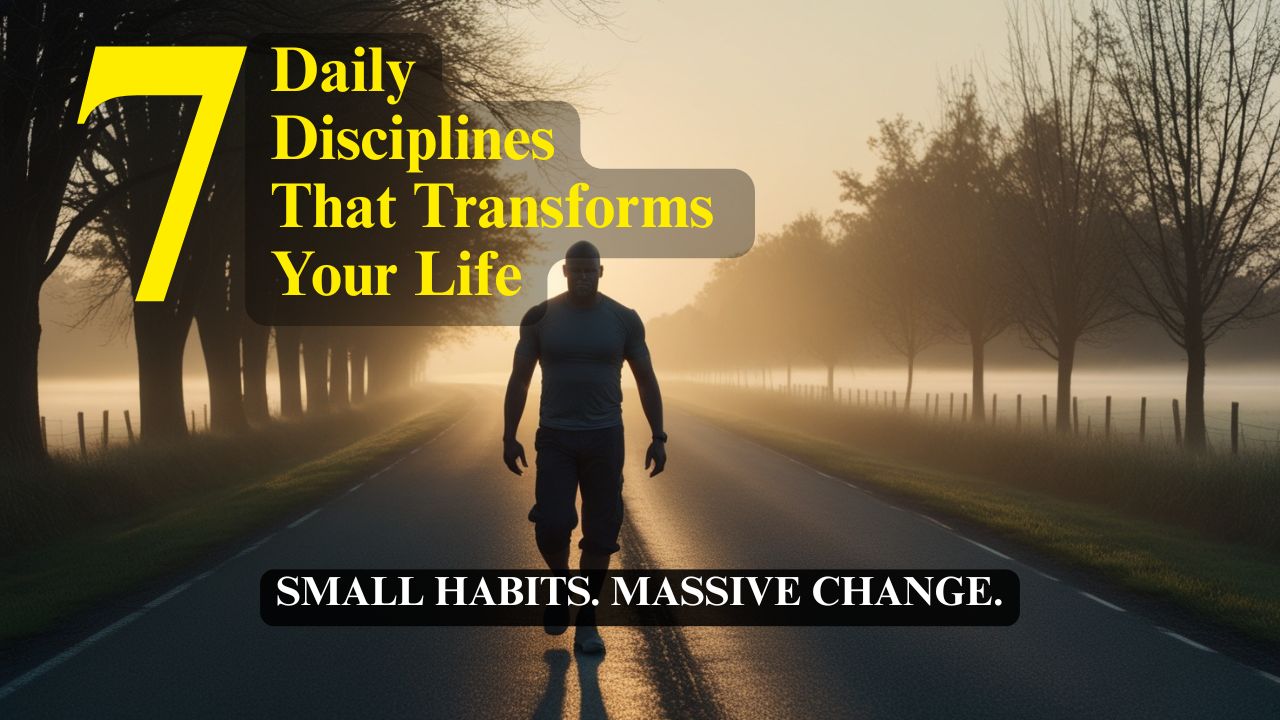
7 Daily Disciplines That Transform Your Life
The power to act with intention, to align your actions with your values, and to move steadily toward a life of purpose—even on days you don't feel like it.
Read Full Article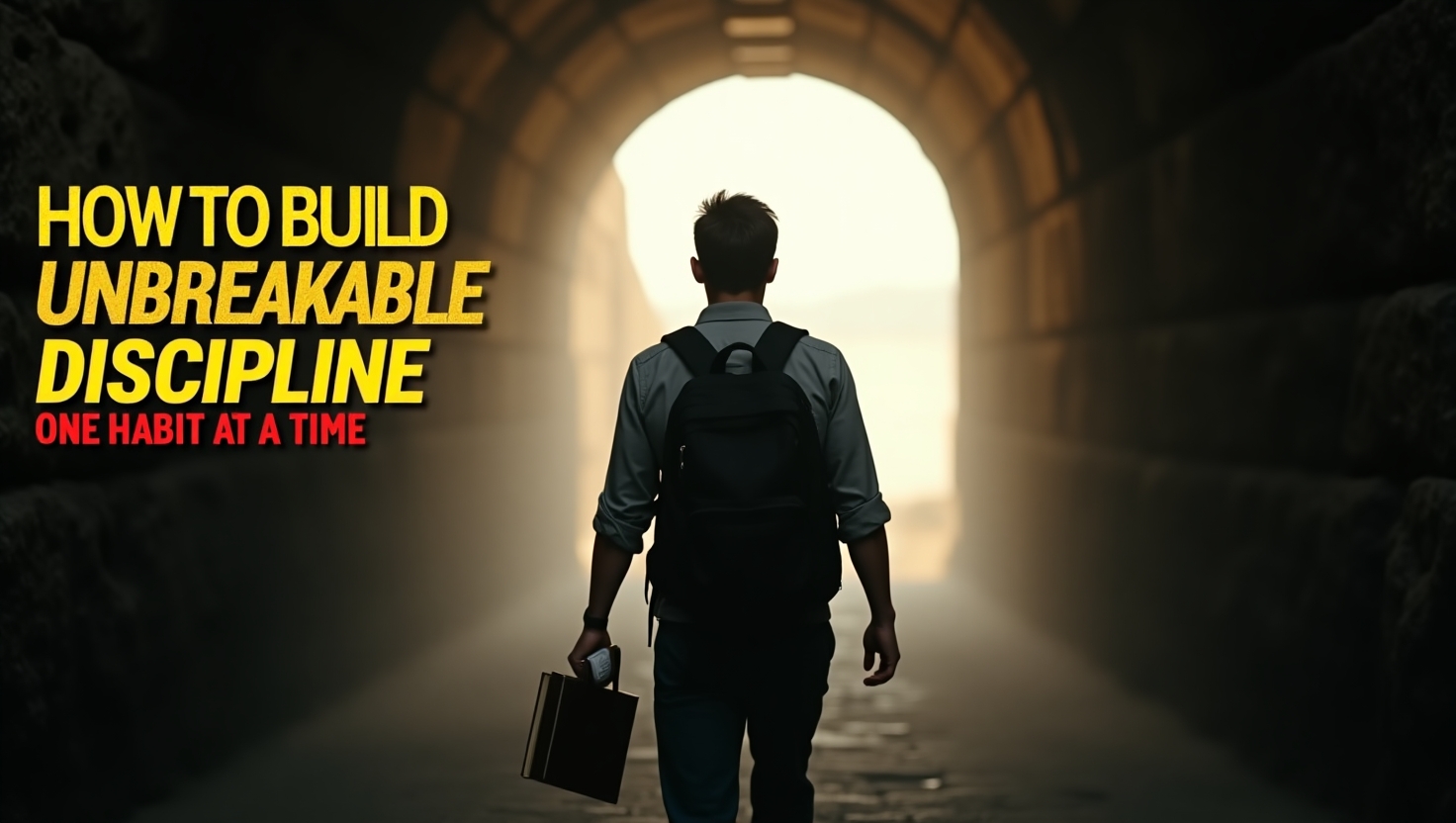
How to Build Unbreakable Discipline
Discipline is built—habit by habit, choice by choice, day by day. And the most powerful kind? The kind that doesn’t crack under pressure. The kind that becomes part of who you are.
Read Full Article
Why Motivation Fails And Discipline Wins Every Time
We all love the feeling of motivation—that surge of energy, that rush of inspiration that makes everything seem possible. But here’s the problem: motivation is unreliable. It’s emotional. It comes and goes. And if your goals rely on you “feeling like it,” you’re already in trouble.
Read Full Article
Discipline Over Desire
Desire is loud. It burns bright, talks fast, and loves to dream. But desire alone doesn't achieve much. Every person has desires. Very few have the discipline to bring them to life.
Read Full Article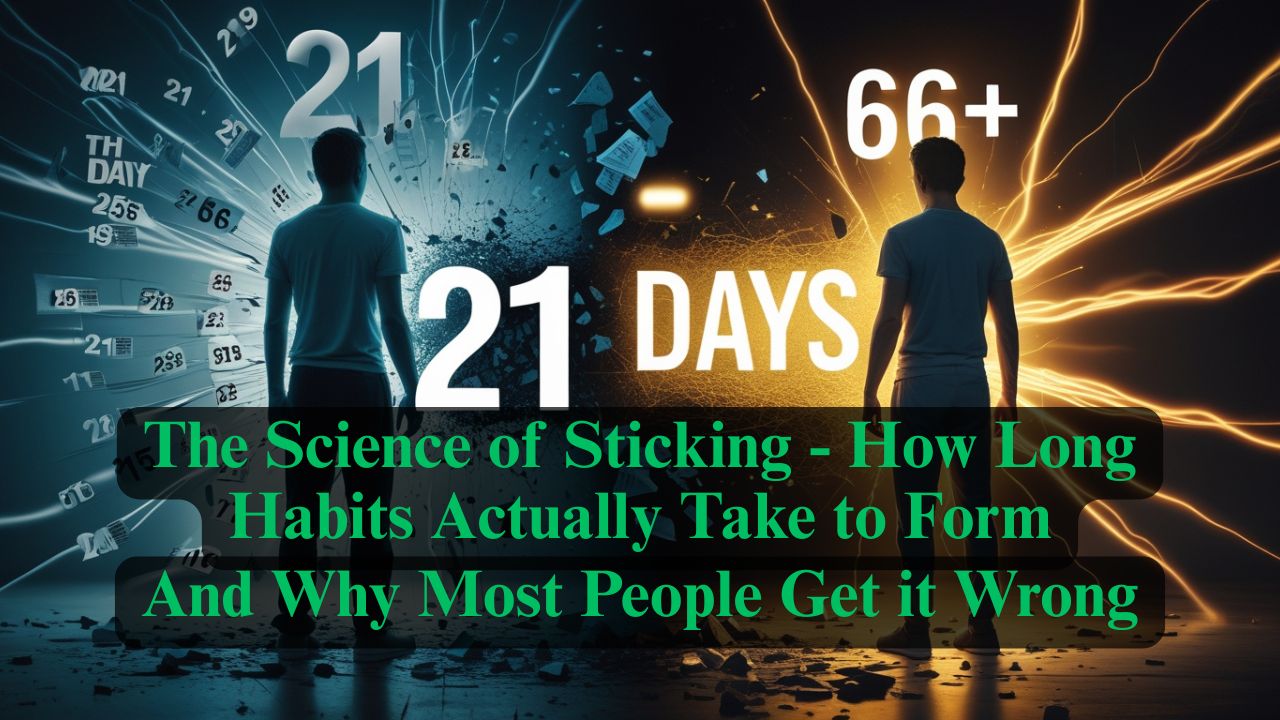
The Science of Sticking
If you've ever tried to build a new habit, you've probably heard that it takes 21 days. This number gets thrown around so often that it feels like scientific fact.
Read Full Article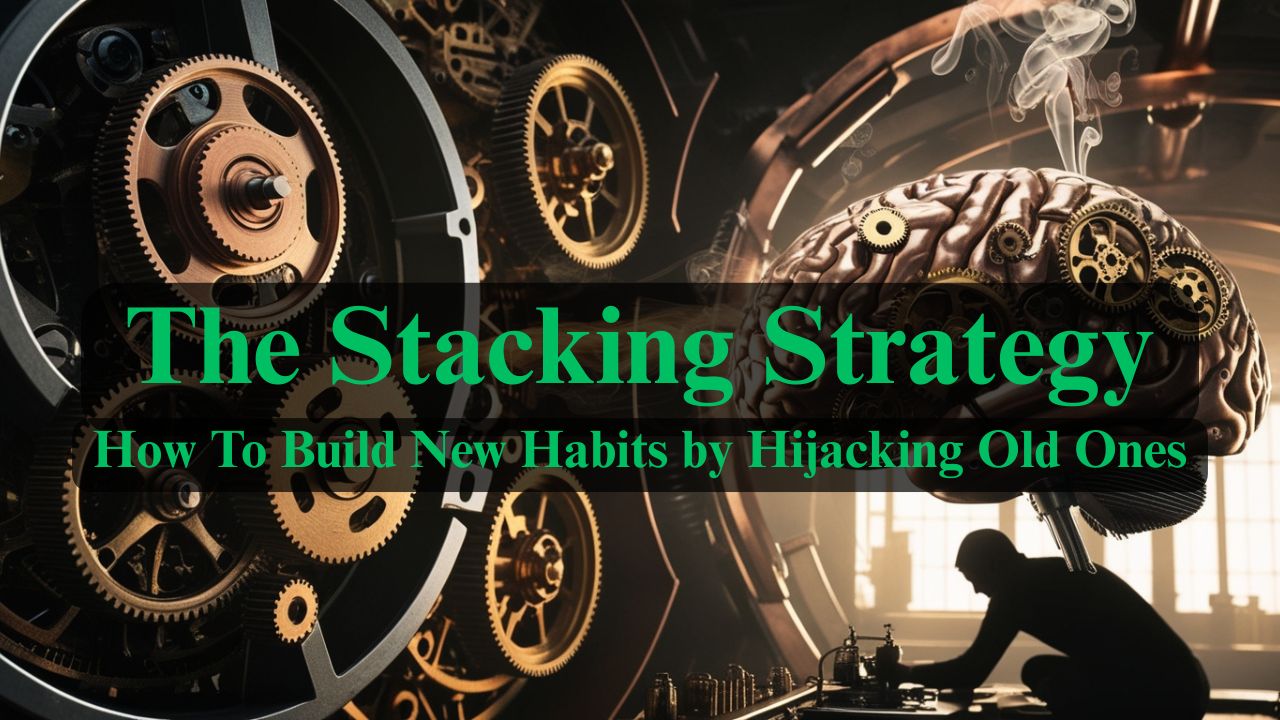
The Stacking Strategy
What if I told you that the habits you already have—even the ones you consider "bad"—could become the secret weapons for building the habits you want?
Read Full Article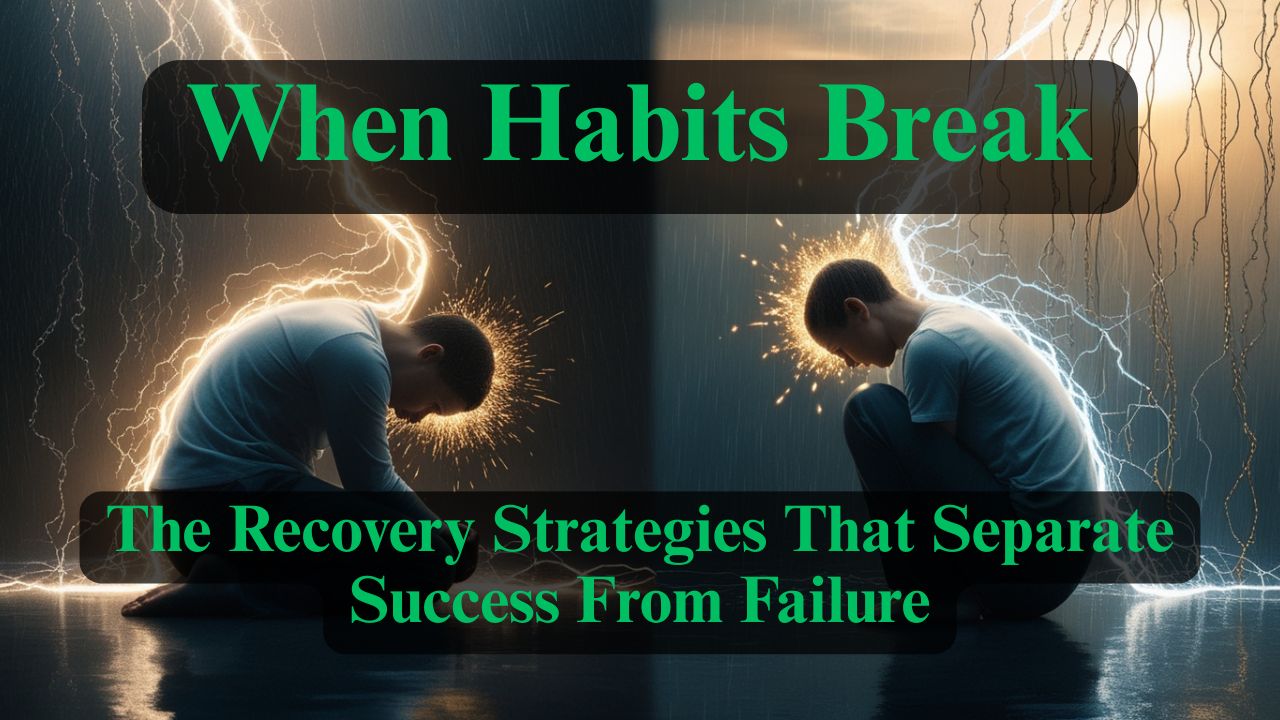
When Habits Fail - The Recovery Strategies That Separate Success From Failure
Here's what nobody tells you about building habits: you will fail. You'll miss days. You'll fall off track. You'll have weeks where everything falls apart.
Read Full Article
The Ultimate System - Designing a Life Where Good Habits Are Inevitable
You've learned to recognize habits, understand their formation timeline, stack them strategically, and recover from setbacks.
Read Full Article


